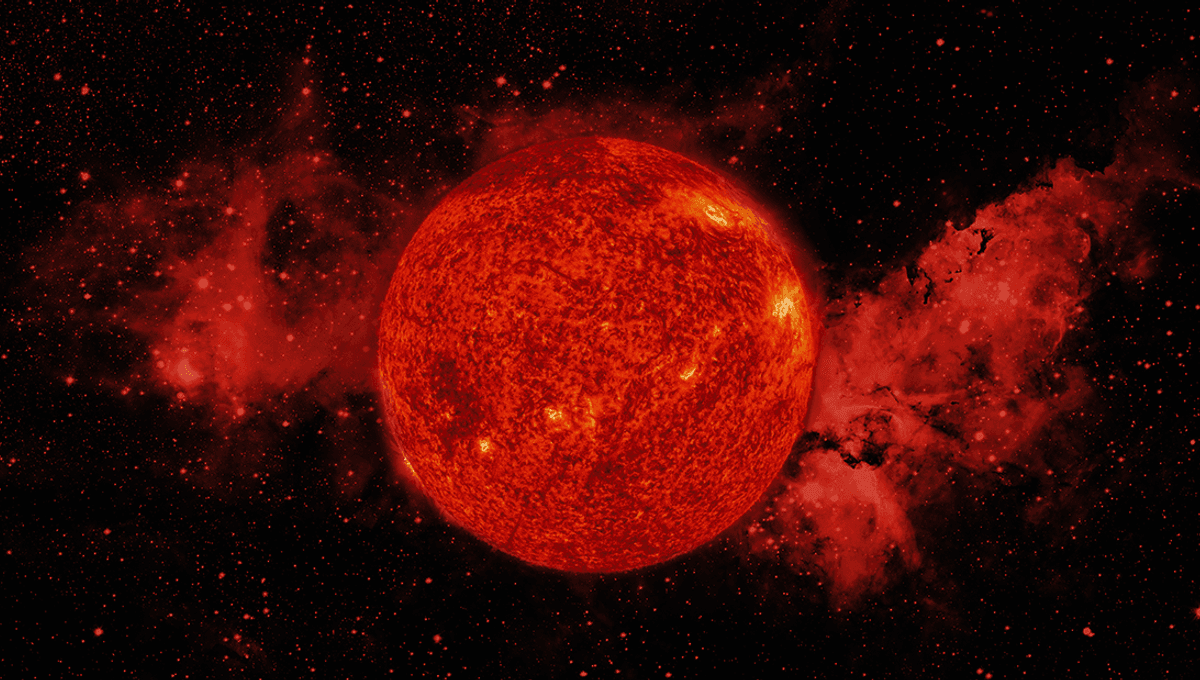
When searching for signs of extraterrestrial life, we have for the large part focused on carbon-based lifeforms. It makes sense that we would do so, as the only lifeforms we have found (here on Earth) are carbon-based.
It has been suggested that silicone could also provide a base for life, though nothing matches carbon’s solubility in water or ability to form stable bonds with other elements. But what about even more exotic forms of life?
According to one paper (and a whole bunch of science fiction) life could emerge within stars. While highly speculative (involving strings of string theory and magnetic monopoles) and by no means suggesting life does emerge in stars, it’s an interesting way of thinking about life and how broad it could be.
“If one accepts that life is merely self-replication with mutations that leads to the increasing complexity through natural selection, any system capable of such processes can be viewed as a form of life,” the team writes in their paper.
“More concretely, life needs at the minimum of these three hypotheses:
1. The ability to encode information.
2. The ability of information carriers to self-replicate faster than they disintegrate.
3. The presence of free energy: at the minimum ΔF=TΔS, needed to constantly create order out of the disorder by decreasing entropy S through self-replication, where T is the temperature of the system.”
Given this definition of life, the team suggests that it could emerge within main-sequence stars like the Sun.
In animal life, information is encoded in DNA. But in stars, the team suggests that information could be passed on by “superconducting strings (carrying electric currents and generating magnetic fields) that become magneto-hydro-dynamically frozen into plasma”.
Cosmic strings were first suggested in the 1970s by theoretical physicist Tom W. B. Kibble, and later revived in the context of string theory. The one-dimensional strings, far narrower even than a proton, are thought to have sprung into existence in the very first second of the universe and could potentially stretch right across it. Though we should be able to detect such defects by the gravitational lensing they produce, we do not yet have evidence that they actually exist.
But if a string were to be captured by a star, or have one inside it as it forms, it would be enough to begin life-like processes. Magnetic monopoles – hypothetical particles with a single magnetic charge – would be produced and form like beads along the string, according to the team, in a way that looks similar to the structure of DNA.
“Remarkably, there is a stable configuration, the bead, in which the magnetic flux of the monopole […] is confined to two stable strings,” the team explains. “Such string structures with monopole beads are so-called ‘necklaces’.”
“Remarkably, multiple strings can originate from monopoles and connect them into two- and three-dimensional structures, resembling atoms coupled by chemical bonds.”
This alone would not be enough to carry information, but the team believes there could be configurations of monopoles, strings, and semi-poles that could be complex enough to carry information, and crucially pass it on before it fades away, like life.
Over the lifetime of a star, these configurations could reach enormous complexity, and the team writes that stars behaving unusually could contain within them this “nuclear life” using a small fraction of the star’s fusion energy for self-replication.
The team even suggests that binary star system EPIC 249706694 (HD 139139) – better known as the “random transiter” could be a candidate for this kind of life. As the name suggests, astronomers saw dips in light from the system, which would usually indicate a transit of a planet, but at seemingly random intervals. However, follow-up observations by another team suggest either their observations were not long enough to see transitions, had stopped by the time they observed the stars, or that there were some unidentified errors in the original team’s equipment.
“Of course, attributing the anomaly in the luminosity of a star to nuclear life would be a very long shot,” the team explains. “We just wanted to emphasize that such unexplained anomalies do exist. Maybe the answer to Fermi’s question: Where is everybody? can be found in the least expected places.”
The paper is published to pre-print server OSF Preprints.
Source Link: Physicists Suggest "Nuclear Life" Could Explain Strange Dimming Of HD 139139 Star